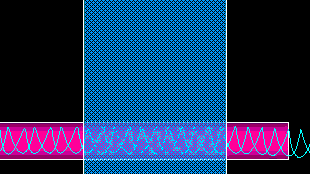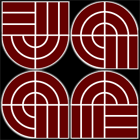|
Biomedical
 |
Release of EndostapleTM onto Stent
and Vessel Wall: 2-D View |
|
Simulation of the Insertion of an EndostapleTM
In order to obtain FDA approval for the EndostapleTM, a device to hold a vascular stent to the blood vessel wall, it was necessary to perform
a non-linear finite element analysis of the insertion of the Endostaple into the stent and vessel wall.
- The first step in the insertion consists of feeding a bifilar nitinol wire that is initially in a double helix shape onto an optical cable.
- Next, the optical cable ablates a hole in the graft and tissue and then the cable with the staple is placed through the hole in the stent and the vessel wall.
- Finally the optical cable is removed while the staple remains and attempts to return to its double helix shape.
Initial modeling efforts, designed to characterize the response of the staple during initial stretch, were centered on standard non-linear implicit static analysis procedures using ANSYS 5.7. Due to the extremely large deflections and the significant number of complex interacting contact surfaces, it was decided that it would be more computationally efficient to
perform the complete stretch/unloading analysis of the staple using ANSYS/LS-DYNA explicit dynamics analysis software to perform the quasi-static analysis.
- Initial explicit dynamics models implemented in this study made the assumption of no friction or damping, and were designed to reduce, or limit, the number of contact surfaces.
- These assumptions were incorporated in the spirit of minimizing the level of complexity of the resulting non-linear analysis -- a tenet borrowed from implicit analysis.
- During post-analysis, these solutions gave obviously incorrect deformed shapes.
- It was only when the simplifying assumptions were removed and the fidelity of the explicit model improved to include as much of the correct physics as possible, that realistic solutions were obtained.
|

